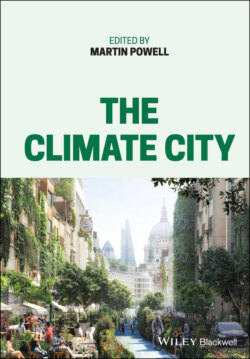Читать книгу The Climate City - Группа авторов - Страница 44
Sewage
ОглавлениеThe discovery that cholera was a waterborne disease was pivotal in the city’s urban transformation. The Thames was little more than an open sewer system with zero wildlife and represented a public health hazard as much of the city’s waste ran freely through the streets and thoroughfares directly into the river. The city depended on a system of local waste disposal such as night-soil collectors to empty local cesspits and the city’s rivers, which also served as a source of drinking water and washing.23 The increasing use of the flush toilet made things worse as it allowed the wealthy to flush their excrement directly into the river. The summer of 1854 saw the “Great Stink” engulf London. The hot weather helped expose the pollution of the water of the Thames, and waterborne diseases like cholera and typhoid swept through the population. The smell was so overpowering that The Times newspaper said that MPs had been “forced by sheer stench” to rush a bill through Parliament in just 18 days in the effort to provide money to construct a new sewer system for London.24
The engineer, Sir Joseph Bazalgette, was commissioned to design a network of enclosed underground brick main sewers to intercept sewage outflows, and street sewers to intercept the raw sewage that ran freely along them. At a time when London’s population totalled 1 million people, Bazalgette made the ingenious decision to build it for 4 million people, “ensuring it will never need to be expanded”. The results were enormous, with the end of the cholera epidemic, improved public health, and innovative transformation of London’s sewer system.
With an ever-expanding population of 8 million, London still faces sewage issues to this day, with sewer overflow emissions happening about fifty times per year. This has resulted in a brand-new super-sewer, the Thames Tideway, being dug under London to intercept sewage that would otherwise pollute the river. Seven metres wide, it will run for 25 km, impressing Bazalgette I’m sure.
London is a lesson in reinvention. Its ability to enact new policy and reform to create a better place, learn from its disasters, and cater to its citizens’ most basic needs with progressive change is a challenge we are still facing today.
